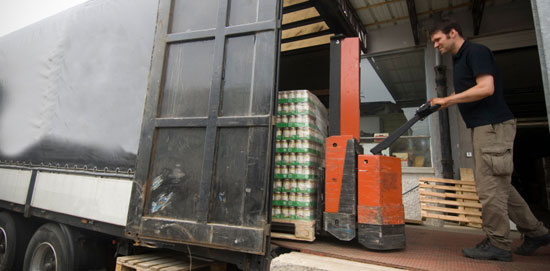The Case for a “Supersized” Receiving Area in Your Warehouse
Inadequate receiving space can trigger inefficiencies and errors; don't let other functions "borrow" receiving space

Receiving is an often-overlooked but critical component to warehouse workflow. Receiving mistakes can flow through every other aspect of your operation.
If you can’t quickly and accurately break down landed shipments and send them to effective putaway, you can sabotage every other aspect of the operation. It has a direct impact on inventory accuracy (and security – in fact receiving is an area of particular vulnerability), throughput, and accurate fulfillment. Too little receiving space tends to become a root cause for many errors and throughput headaches.
Sadly, many operations consider receiving areas as “free” space, forgetting that it is critical space for maintaining operational continuity and flow.
People consider it “free” space, when it’s anything but. Since receiving areas are often empty floor space, it’s tempting to “steal” that space for other functions. Temporary inventory stacked into receiving area floor space can cause issues when a shipment — or a number of them — hit the docks. When crunch times come, that lack of physical footprint can be a real problem. Where does the temporary stock go then?
Make sure you maintain enough space to service your incoming shipments
Ideally you’d like floor space enough to service every receiving door you have, but that may or may not be adequate if the putaway function is time consuming. If you’re simply slotting the pallet so it can be loaded into bulk storage, that’s one thing. If it has to be broken and its contents distributed to many locations, it may occupy that space for much longer.
Room, or lack of it, is often an issue for receiving, as we are often talking large quantities of unbroken, wrapped, and banded pallets. These areas can use tweaks such as empty pallet storage racks to quickly remove dead pallets from the area. They can also benefit from extendable conveyors that help quickly empty trailers or broken pallet contents.
The flexibility to use receiving area space in a temporary role is a good thing. Just be certain that what’s “temporary” stays temporary. To do that, enforce the nature of the area. Don’t allow shipments to linger on the docks that could be put elsewhere unless there is no alternative. Design holding areas for overflow by installing vertical storage (racks, etc) that can absorb shipments while they await their final destination.
Scott Stone is Cisco-Eagle's Vice President of Marketing with 35 years of experience in material handling, warehousing and industrial operations. His work is published in multiple industry journals an websites on a variety of warehousing topics. He writes about automation, warehousing, safety, manufacturing and other areas of concern for industrial operations and those who operate them.




